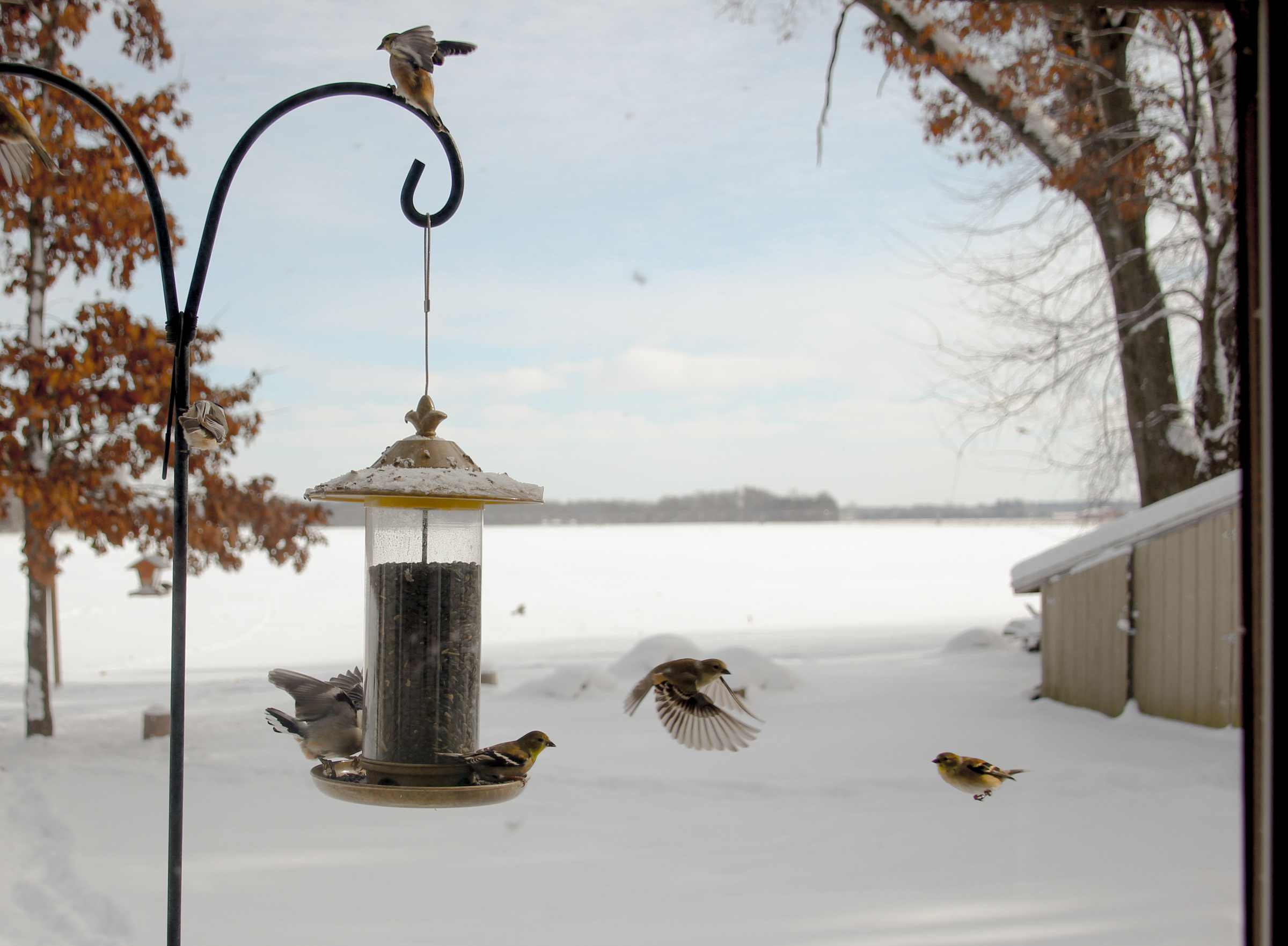Now is the time of year to consider your winter bird feeding options. Although many of you may be thinking it’s time to take down, clean-up, and store your bird feeders for the winter, now is the perfect time to restock, refill, or even expand your bird feeding station.
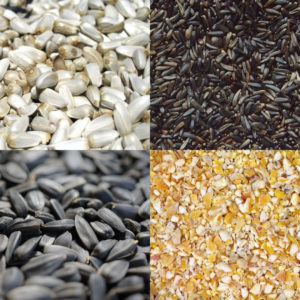
TL: Safflower seed; TR: Nyjer (thistle) seed; BR: Cracked corn; BL: Sunflower seed.
Feeding the birds, although not necessary, is a great supplement to their naturally available diet. This is even more true during the harsh winter months. Additionally, feeding birds in the winter is a great way to enjoy the outdoors from the comfort of your home. As we approach the cold months ahead, please consider the following tips for feeding the birds.
Food type is critical
During the winter months, birds need food that is high in fat or oil content. This provides them with sufficient and long-lasting energy to keep them warm and moving. As we start to experience especially cold spells in mid to late winter, this food becomes even more important as other food sources become more scarce. Black oil sunflower and nyjer (thistle) seed are all great options for needed nutritional content for various species. Fill your tube or sock feeders with these and leave seed mixes, peanuts, or cracked corn on the ground or in platform feeders. Suet is also crucial during the winter months.
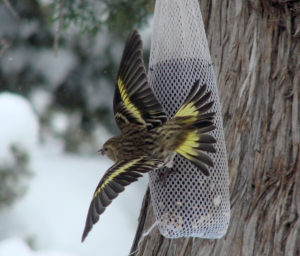
Pine Siskin. Photo by Linda Butler | APA
Feeder style attracts species
As is true at any point in the year, different feeders attract different species. This is true due to varied body size and food content in different feeders. Tube and sock feeders are great for smaller birds like finches, chickadees, and titmice. Platform or hopper feeders might be a better option for jays, cardinals, and doves. Suet feeders are great for nuthatches and woodpeckers. However, depending on the types of woodpeckers you have, you may want to consider mounting suet feeders to trees to provide better support for larger birds.
Water is highly beneficial
Although it takes extra care, providing water for birds in the winter is beneficial for their health and wellbeing. Any birdbath left out during the winter should be heated to prevent freezing. Great care needs to be taken with ceramic birdbaths because they are likely to crack or break in the cold. Plastic is usually the best option for the winter.
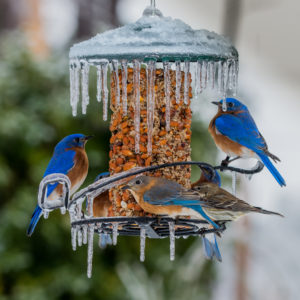
Eastern Bluebird. Photo by Herbert Fechter | APA
Cover is preferred
When managing your yard and feeding area for the winter, cover is preferred by birds of all shapes and sizes. Cover can have several roles and take on many different forms. Birds have more vulnerability in the winter months because there is less foliage to provide cover for them. This makes them much easier targets for predators and exposes them more to the elements. Cover can be created through brush piles, lean-tos, or a messy garden. Birdhouses also make a great cover for birds and provide a safe space to roost, rest, and warm-up. Additionally, you may choose to put a cover on your feeder’s top to help protect seed and birds from the elements.
Maintenance is key
It’s critical to care for your bird feeders year-round properly. This can be easier said than done during the winter due to the weather. It’s always important to keep seed fresh and dry and keep feeders clean. Feeders may be harder to get to during the winter, so it may be necessary to shovel or clear a path. It’s also beneficial to clear or pack snow around your feeder’s base for any ground-feeding species. This can also help with pest control by keeping away unwanted critters. Depending on the style of bird feeders you have and the amount of snow you get, you may also need to clear snow from perches or platforms.
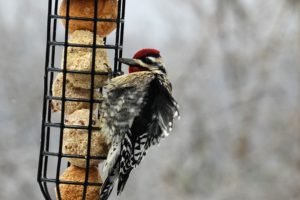
Yellow-bellied Sapsucker. Photo by Pamela Brown | APA
Be sure to keep feeders at an appropriate distance from windows to prevent window collisions — either less than 3 feet or greater than 30 feet away from windows. Snow can create extra reflections, making it even easier for birds to collide with glass, so you may want to consider adding window decals as well.
Although managing and maintaining a feeding station in the winter may seem like a lot of work, it’s incredibly beneficial for our birds. It’s also a great pastime and pleasurable experience to enjoy from the comfort of your home. Furthermore, winter bird feeding is a great time to hone your bird identification skills and learn more about the birds that live in your backyard!
Featured image: American Goldfinch and Evening Grosbeak. Photo by Susan Smith | APA

